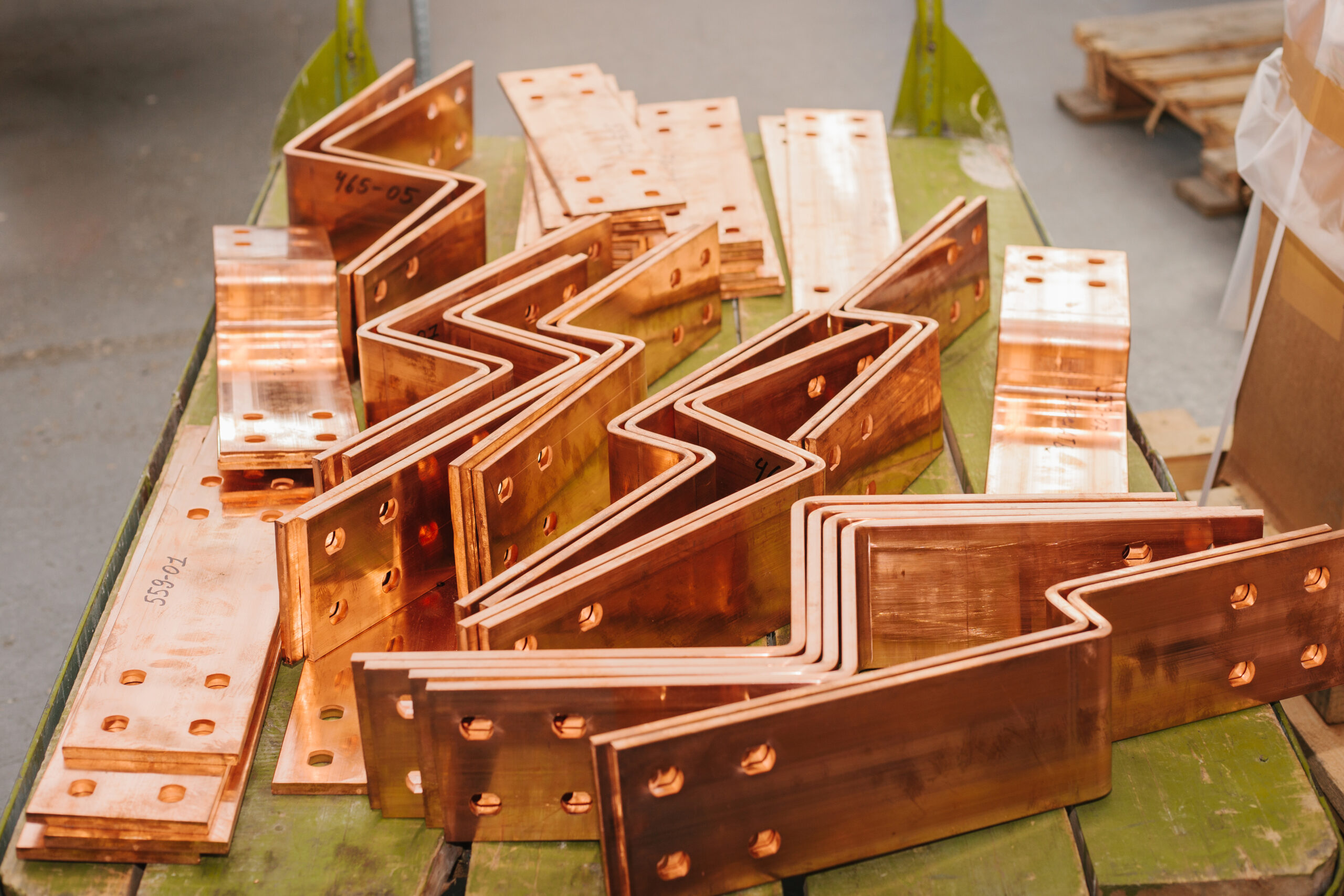News
What Are Electrical Busbars?
Electrical busbars are the foundational connectors found in almost all our power distribution solutions. Busbars allow our equipment to conduct large amounts of electricity, making them a top choice for low to high voltage projects. Our power distribution units are a high-quality, low-cost option that is simple to install. To top things off, our Load Bank Stations (LBS), Generator Docking Stations (GDS), and Company Switches effortlessly connect with camlock generator cables allowing for less time spent connecting equipment and more time completing project tasks.
Our team is 100% committed to offering the safest and most reliable power solutions on the market. Our Tap Boxes, LBS, GDS, and Company Switches include busbars that have been carefully selected from the top brands in the industry. This way you can be confident that your Power Assemblies gear can handle its maximum rating with ease. We take pride in our equipment and believe that its performance speaks for itself. In this blog, we will discuss electrical busbars and explain how they enhance our equipment.
The Role of Busbars in Electrical Systems
Busbars are a bar or strip of solid, conductive metal that is used to transport an electric current from one location to another with minimal energy loss. When compared to cables, electrical busbars offer much more surface area that can be used to conduct electricity. For example, a cable’s conductors are made of many thin, insulated strands that are bundled together and wrapped in a protective cable jacket. Busbars, on the other hand, have a wide and flat design that’s perfect for moving large amounts of electricity. Plus, busbars are usually uninsulated so that it’s easy for heat to dissipate while the busbar is conducting electricity.
Busbars have a rigid texture and are reserved for equipment with heavy-duty applications that tend to generate a lot of vibrations. If electrical busbars begin to shake or deform while they are conducting electricity, it can cause electricity to arc off its intended path. We make sure that our busbars are securely bolted to the inside of our equipment so that all components will stay in place and operate safely. Plus, we test each of our power distribution units before we send it to your facilities. You can always trust that your order will arrive on time and ready to be installed at your customer’s job site.
Types of Electric Busbars
As we briefly mentioned earlier, electrical busbars are made of a solid, conductive metal. They can be made from a variety of materials depending on factors such as the current capacity of your application and your budget. Copper is the most common material used to make busbars because it is very durable and a top electrical conductor. While we do offer non-dipped busbars, we like to use solid copper busbars that are dipped in either tin or silver. These coatings offer a wide range of benefits such as protecting the copper from oxidation, corrosion, and galling. Tin and silver also add lubricity to each busbar and support conductivity for well-rounded performance.
Busbars come in three main shapes: thick bars, flat strips, and rods. The shape of the busbar used in power distribution equipment depends on the amount of electricity that your project needs, the amount of space that is available in the enclosure, and the overall design of your electrical system.
Thick bars are robust, solid structures that offer the most surface area out of these three busbar shapes. We use thick bars in our equipment because they are ideal for high-voltage applications where conductivity is the focus of your equipment’s design. Rods and flat strips are used in situations where space is the main concern. Flat strips look like thin, wide bars and rods are a type of cylindrical busbar. Due to their ability to be arranged into compact designs, flat strips offer a lot of flexibility while being installed.
We hope you enjoyed this article and have gained a better understanding of how electrical busbars are used in some of our power distribution units. We offer Load Bank Docking Station, Generator Docking Station, Tap Boxes, and Company Switches in a wide variety of configurations so that you can always offer your customers exactly what they need to complete their projects. However, if you ever require equipment outside of our standard variations, we offer customized power solutions at your request. You can find all these innovative power solutions in the Power Distribution section on our website. If you would like to request a quote or a custom configuration, please reach out to us at [email protected] or call us at (866)-825-8525 today!

